Nature
Spermy
Multiple copies for sale at Abebooks."Published by The Marine Historical Association, Inc., Mystic, CT, 1950. A brief introduction to whales."
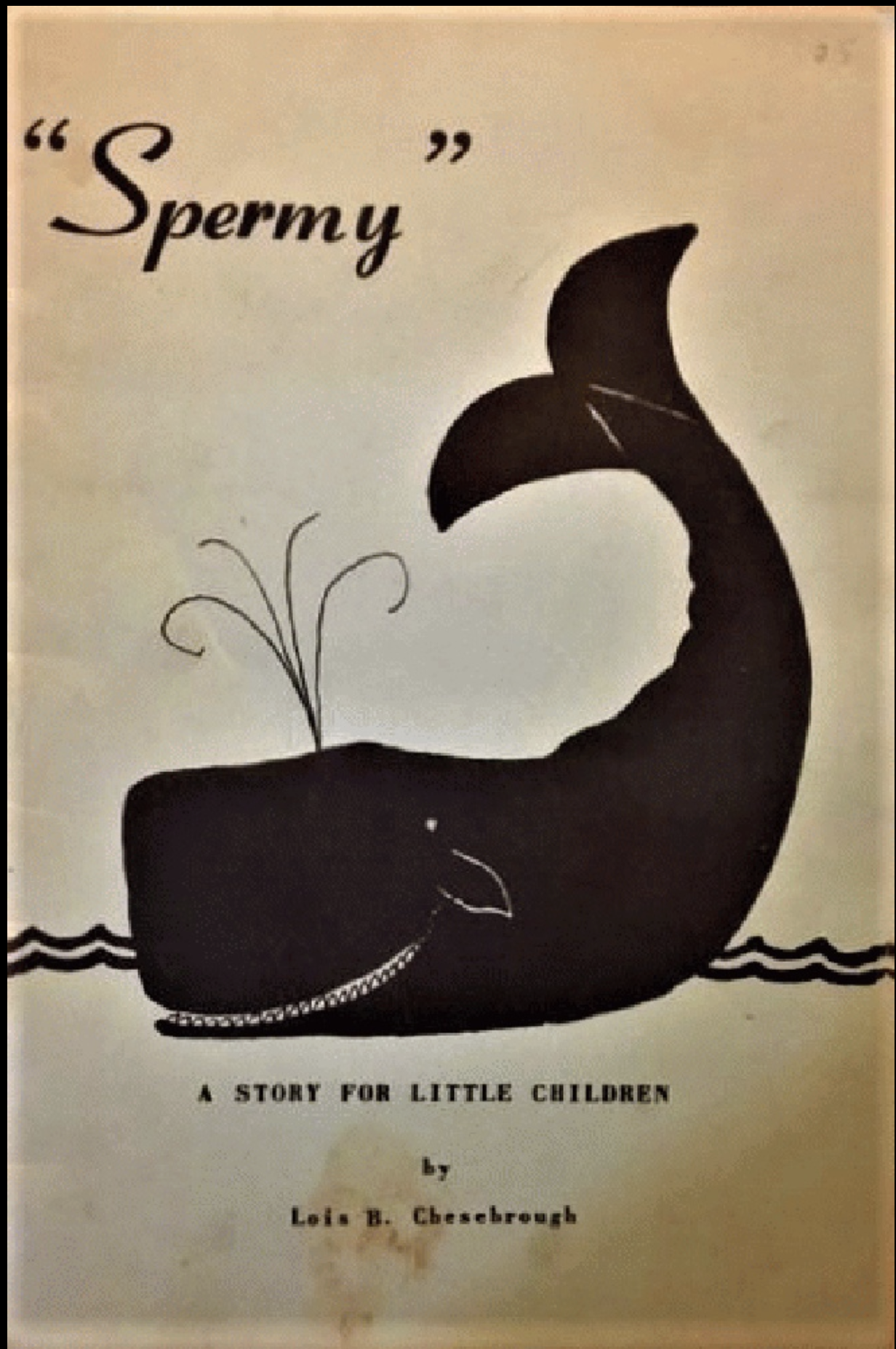
Thanks to Richard Bleiler.
Posted By: Paul - Tue Sep 12, 2023 -
Comments (2)
Category: Innuendo, Double Entendres, Symbolism, Nudge-Nudge-Wink-Wink and Subliminal Messages, Nature, Oceans and Maritime Pursuits, Books, Reader Recommendation
Corn Rocks
"Corn rocks" are pieces of lava rock that have impressions of pieces of corn imbedded in them. Geologists have found many samples of corn rocks around the Sunset Crater Volcano in northern Arizona. When the volcano erupted, about 1000 years ago, the people that lived around it were evidently putting pieces of corn in the lava to create these rocks. Why they did this is anyone's guess. Perhaps for religious reasons, or perhaps just for fun.
Source: Google Arts & Culture
Geologists tried to create corn rocks of their own at Kilauea Volcano in Hawaii, but they found it wasn't as straightforward as they had assumed. Putting the corn in the path of a lava flow didn't work. Nor did dropping corn on top of a flow. Geologist Wendell Duffield tells the rest of the story:
Obviously, it would not be safe for humans to carry ears of corn into the fallout zone of a towering lava fountain. A safe setting, however, would be at what geologists call an hornito (means "little oven" in Spanish). An hornito is essentially a miniature volcano that spews molten blobs of melt that fall back to Earth and accumulate into a welded-together chimney-like stack as they solidify and cool...
So, early Native Americans living near the present site of Sunset Crater Volcano witnessed an eruption that at some stage could be safely approached to place ears of corn at the base of an active hornito.
Posted By: Alex - Fri Aug 11, 2023 -
Comments (0)
Category: Nature, Science, Anthropology, Ancient Times, Arizona
Houses Integrated with Trees
I once ate at a restaurant in Medellin, Colombia, which featured a massive tree in the dining area that grew up through the roof. The urge to blend trees with houses is an ancient one.Here's an instance from 1920.
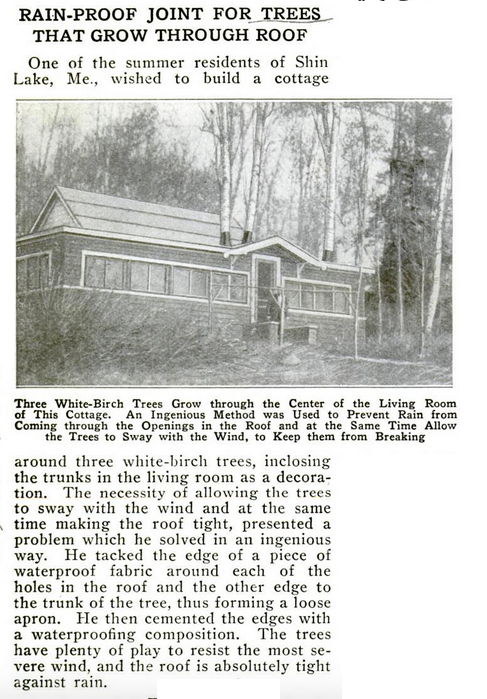
This article details modern occurences of the motif.

Posted By: Paul - Mon Dec 12, 2022 -
Comments (0)
Category: Architecture, Domestic, Nature, 1920s
Parisian Tree Climbers
After World War II, some Parisians embraced existentialism. Others took to climbing trees in their underwear.Images and text from Life (July 18, 1949).
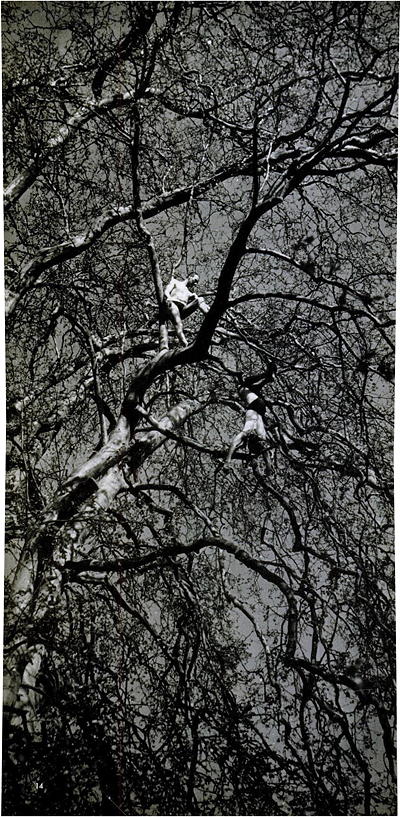
"Treetop acrobatics are privilege of veteran climbers who go as high as 100 feet above ground"

"Prettiest tree climber is 25-year-old Catherine Arley, an actress specializing in comedy roles"
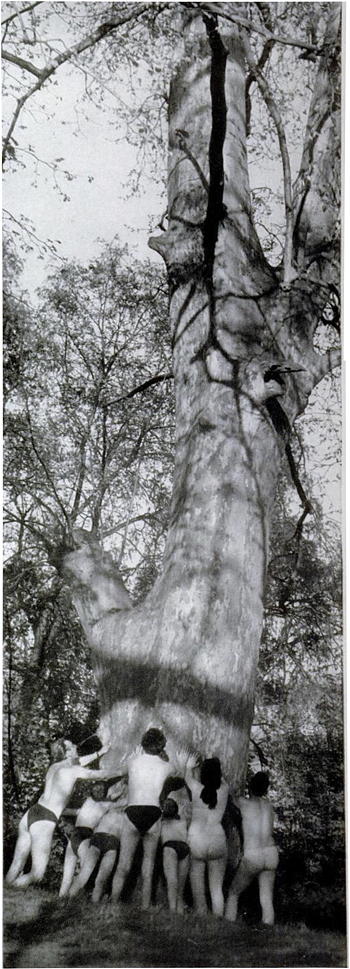
"Preclimb ritual finds scantily-clad members saluting huge plane tree, which Cofounder Jacques Gall recently described as a 'symbol of heaven.'"
Posted By: Alex - Tue Oct 11, 2022 -
Comments (3)
Category: Fads, Nature, 1940s
Payment in Clams
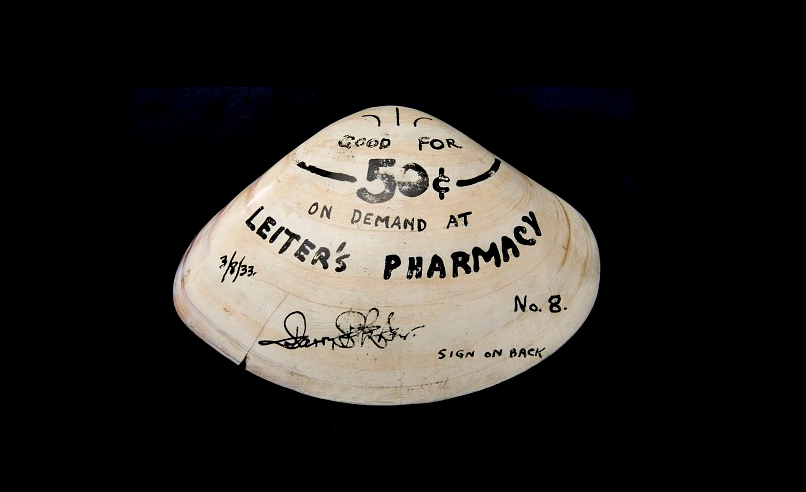
When the nation's banks closed during the Depression, Leiter's Pharmacy in Pismo Beach, California, issued this clamshell as change.
The 1929 stock market crash triggered banking panics, as people rushed to withdraw their savings before they were lost. In March 1933, President Roosevelt ordered a four-day bank holiday to prevent further withdrawals. To compensate for the currency shortage, communities created emergency money, or scrip. This clamshell was signed as it changed hands and redeemed when cash became available again.
Source.
Posted By: Paul - Mon May 16, 2022 -
Comments (2)
Category: Money, Nature, 1930s
Plant-Based Instrument
More info: Stan Smeets
Posted By: Alex - Wed Mar 23, 2022 -
Comments (0)
Category: Music, Nature
Miss Orchid Bathing Suit
I wish I knew the real title and other details of this beauty queen. But I think, just based on the costume, we can include her in our pageant of Weird Beauty Contest Winners.
Posted By: Paul - Sun Feb 27, 2022 -
Comments (0)
Category: Awards, Prizes, Competitions and Contests, Beauty, Ugliness and Other Aesthetic Issues, Nature, Twentieth Century
Peat Moss Diapers
A manual on infant care, released by the U.S. Department of Labor in 1914, recommended peat moss (aka sphagnum moss) for use in diapers:Such a pad (i.e., a pad of sphagnum moss inclosed in cheesecloth) weighing only an ounce will completely absorb and retain a quarter of a pint of urine—say as much as would be passed in the night. This is infinitely cleaner and healthier than allowing the urine to spread over a wide area of napkin and nightdress, and thus cause extensive chillding and more or less irritation of the skin. Dry sphagnum forms an extremely light, clean, airy, elastic pad, which will yield in any direction and accommodate its shape to the parts.
Those living in the country where this moss grows may find it a great convenience to pick and dry the moss for this or other domestic purposes.
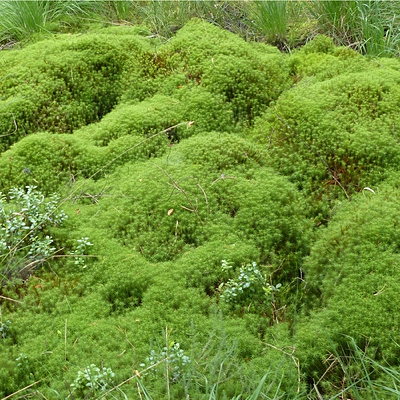
peat moss
Some googling reveals that Native American tribes, way back when, would often use peat moss for diapers.
And at the Earthling's Handbook you'll find an account by a modern-day couple who used peat moss for diapers and reported positive results:
Posted By: Alex - Sat Feb 26, 2022 -
Comments (3)
Category: Babies, Nature
Stramonium Cigarettes: Smoking to Relieve Asthma
Long professional article on their history here.The relevant info at Wikipedia.



Posted By: Paul - Tue Feb 01, 2022 -
Comments (2)
Category: Nature, Patent Medicines, Nostrums and Snake Oil, Nineteenth Century, Twentieth Century, Diseases
Forest Mensuration
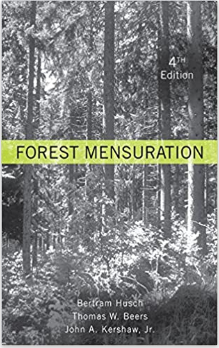
Besides sounding slightly naughty, "Forest Mensuration" proves epically boring.
"Trees get skinnier from bottom to top" is one thing you will learn.
Posted By: Paul - Fri Nov 26, 2021 -
Comments (2)
Category: Boredom, Nature

| Who We Are |
|---|
| Alex Boese Alex is the creator and curator of the Museum of Hoaxes. He's also the author of various weird, non-fiction, science-themed books such as Elephants on Acid and Psychedelic Apes. Paul Di Filippo Paul has been paid to put weird ideas into fictional form for over thirty years, in his career as a noted science fiction writer. He has recently begun blogging on many curious topics with three fellow writers at The Inferior 4+1. Contact Us |




